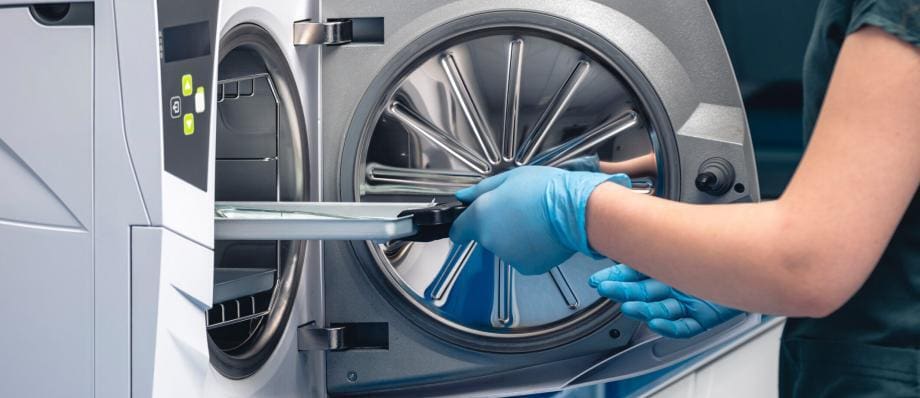In the realm of dentistry, ensuring proper sterilization of instruments and equipment is paramount to maintain aseptic conditions and protect patients from potential infections. One indispensable tool in achieving this goal is the dental autoclave. Dental autoclaves are devices designed to sterilize dental instruments, eliminating harmful microorganisms through high-pressure saturated steam and heat. This article delves into the workings, types, significance, and maintenance of dental autoclaves, aiming to provide a comprehensive understanding of this crucial piece of dental equipment.
Understanding How a Dental Autoclave Works
The principle behind the functioning of a dental autoclave revolves around the use of steam, pressure, and heat to achieve effective sterilization. The primary components of a dental autoclave include a chamber to hold the instruments, a heating element to produce steam, a pressure pump, and controls to regulate temperature, pressure, and duration of the sterilization cycle.
The process begins by loading the instruments or items to be sterilized into the autoclave chamber. The autoclave door is then securely sealed, and the desired sterilization parameters, such as temperature and pressure, are set. The autoclave heats the water to produce steam, and as the steam fills the chamber, it raises the temperature and pressure within.
The high temperature (usually around 121-134 degrees Celsius or 250-273 degrees Fahrenheit) and pressure work together to kill bacteria, spores, and other microorganisms that may be present on the instruments. The exposure to these extreme conditions for a specified duration effectively ensures the sterilization of the instruments, rendering them safe for use in dental procedures.
Types of Dental Autoclaves
Dental autoclaves come in various types, each with its own features and applications. The key types include:
- Class N Autoclaves
- Class B Autoclaves
- Class S Autoclaves
- Pre-Vacuum Autoclaves
- Tabletop Autoclaves
Class N Autoclaves
Class N autoclaves are the most basic type and are primarily used for sterilizing solid, unwrapped instruments. They operate at subatmospheric pressure and do not have a vacuum cycle. While they are effective for many instruments, they are not suitable for porous or hollow items.
Class B Autoclaves
Class B autoclaves are the most advanced and versatile type. They can sterilize all types of instruments, including porous, hollow, and wrapped items. Class B autoclaves operate at both positive and negative pressure, ensuring effective sterilization. They are equipped with powerful vacuum pumps that remove air from the chamber, facilitating the penetration of steam into all areas of the load.
Class S Autoclaves
Class S autoclaves are a variation of Class B autoclaves and are designed to sterilize solid, unwrapped instruments. They operate at higher temperatures and pressures than Class N autoclaves, providing a more robust sterilization process.
Pre-Vacuum Autoclaves
Pre-vacuum autoclaves, commonly found in Class B and Class S types, utilize a vacuum pump to remove air from the chamber before the sterilization process. This vacuum cycle enhances steam penetration, making it suitable for various instrument types.
Tabletop Autoclaves
Tabletop autoclaves are compact and designed for smaller dental practices or as a supplementary autoclave. They have a smaller chamber capacity but retain the ability to effectively sterilize instruments.
Significance of Dental Autoclaves
Proper sterilization is a cornerstone of infection control and patient safety in any dental practice. The use of dental autoclaves offers several vital benefits:
- Patient Safety
- Compliance with Regulations
- Instrument Longevity
- Reduced Contamination Risk
Patient Safety
By effectively sterilizing dental instruments, autoclaves help prevent the transmission of infections or diseases between patients. This is crucial for ensuring patient safety and maintaining a professional, responsible dental practice.
Compliance with Regulations
Dental autoclaves help dental practices comply with regulatory standards and guidelines related to infection control and sterilization. Adhering to these regulations is not only a legal requirement but also an ethical responsibility to patients.
Instrument Longevity
Proper sterilization with autoclaves extends the lifespan of dental instruments by maintaining their integrity and functionality. Clean, sterilized instruments contribute to consistent and high-quality dental care.
Reduced Contamination Risk
Through the elimination of microorganisms, autoclaves drastically reduce the risk of cross-contamination. This is essential for maintaining a clean and safe dental environment.
Maintenance and Care of Dental Autoclaves
Maintaining and caring for dental autoclaves is imperative to ensure their functionality and effectiveness. Here are essential maintenance practices:
- Regular Inspection
- Calibration and Testing
- Cleaning and Descaling
- Use of Distilled Water
- Following Manufacturer Guidelines
Regular Inspection
Perform routine inspections to check for any visible signs of wear, corrosion, or damage. Address any issues promptly to prevent further damage.
Calibration and Testing
Regularly calibrate and test the autoclave to ensure it is operating at the correct temperature, pressure, and time parameters for effective sterilization.
Cleaning and Descaling
Regularly clean the autoclave chamber and components according to the manufacturer’s recommendations. Remove mineral deposits and scale to maintain optimal performance.
Use of Distilled Water
Use distilled water to fill the autoclave, as it reduces mineral buildup and prolongs the life of the autoclave components.
Following Manufacturer Guidelines
Always follow the manufacturer’s guidelines for operation, maintenance, and troubleshooting. Adhering to these instructions will help maintain the autoclave’s efficiency and longevity.
Future Developments and Innovations
The field of dentistry is constantly evolving, and so are the technologies associated with it, including dental autoclaves. Future developments and innovations in dental autoclaves may include:
- Integration of IoT and Automation
- Enhanced User Interface and Controls
- Energy-Efficient Designs
- Advanced Sterilization Monitoring
Integration of IoT and Automation
Integrating the Internet of Things (IoT) and automation into dental autoclaves can allow for remote monitoring, real-time tracking of sterilization cycles, and automated record-keeping. This advancement enhances efficiency, reduces errors, and ensures compliance with sterilization protocols.
Enhanced User Interface and Controls
Improvements in the user interface and controls of dental autoclaves can simplify operation, making it easier for dental professionals to set sterilization parameters and monitor the progress of the cycle. Intuitive touchscreens and user-friendly interfaces can contribute to more efficient usage.
Energy-Efficient Designs
Future dental autoclaves may focus on energy efficiency, utilizing advanced insulation materials and energy-saving features to reduce power consumption during the sterilization process. This not only lowers operational costs but also aligns with the global push for sustainable and eco-friendly practices.
Advanced Sterilization Monitoring
Incorporation of advanced sensors and monitoring systems within autoclaves can enable real-time monitoring of critical parameters during the sterilization process. This includes temperature, pressure, and steam quality, providing a comprehensive view of the sterilization cycle’s efficacy.
Conclusion
Dental autoclaves are indispensable tools in dental practices, ensuring that instruments are sterile and safe for use. Understanding their operation, types, and the significance of proper maintenance is fundamental for dental professionals to uphold high standards of infection control and patient safety.
The different types of autoclaves, including Class N, Class B, Class S, pre-vacuum autoclaves, and tabletop autoclaves, cater to varying needs within dental practices. Each type possesses distinct features and capabilities, making them suitable for specific sterilization requirements.
Regular maintenance and adherence to manufacturer guidelines are crucial for extending the lifespan and maintaining the efficiency of dental autoclaves. Routine inspections, calibration, proper cleaning, and using distilled water are essential practices that should be integrated into the autoclave’s upkeep.
As advancements in technology continue, dental autoclaves are likely to see further developments such as IoT integration, improved user interfaces, energy-efficient designs, and enhanced monitoring capabilities. These innovations aim to streamline sterilization processes and contribute to a safer and more efficient dental environment.
In conclusion, dental autoclaves are foundational in ensuring the highest levels of infection control, which is an indispensable aspect of providing quality dental care. Dental professionals must stay informed about the latest advancements in autoclave technology to continuously improve their practice and prioritize patient safety.





